The 66-1 came onto the market around the turn of the
20th Century
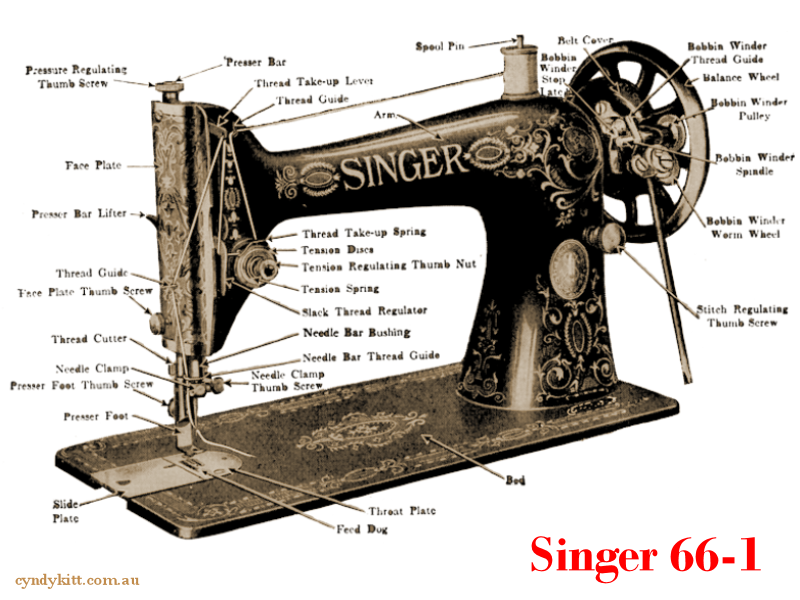
Drop feed lock stitch horizontal oscillating hook with stationary bobbin
case and drop in bobbin for home use.
The 66-1 (treadle) and 66-3 (hand crank) were developed at Singer's Elizabethport
factory in the USA and went on the market around 1902 (according to ISMACS).
Historical documentation on 66K (Kilbowie) submodel numbers appears to
have been lost so I am only presuming Kilbowie used the same submodel
numbers. The 66-1 and 66-3 and the Kilbowie equivalent (presumed 66K1
and 66K3) have back clamping presser feet. The resoning behind haveing
a seperate presser foot system for a single model is lost knowledge.
Also unique to the 66 and 66K are the decal sets commonly known as "Red
Eye" (only used on Elizabethport models) and "Lotus" (mostly
used on Kilbowie models). In the 1920s the back clamp presser foot was
made obsolete in preference for the low shank side clamping foot used
on most domestic models with the introduction of the 66-4 and presumed
66K4. The Stitch length control on all 66K was by thumb screw. Very few
Elizabethport 66 class machines were imported to Australia and Kilbowie
production of the 66K ceased at the start of WW2.
Bed size for all 66 class 37cm × 17.8 cm
|
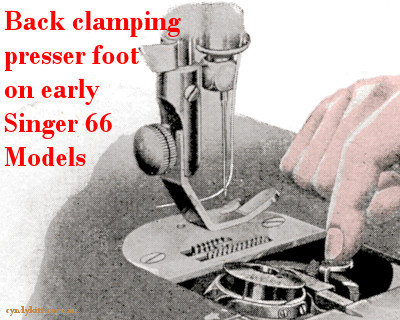
The 66-1 and 66-3 and the Kilbowie equivalent
(presumed 66K1 and 66K3)
have back clamping presser feet. |
|
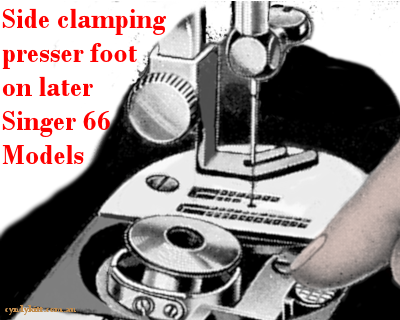
The 66-4 and 66-5 and the Kilbowie equivalent
(presumed 66K4 and 66K5)
have side clamping low shank presser feet.
|
For more information about these
models check out the manual |

Singer 99K2

Singer 99K13

99K26
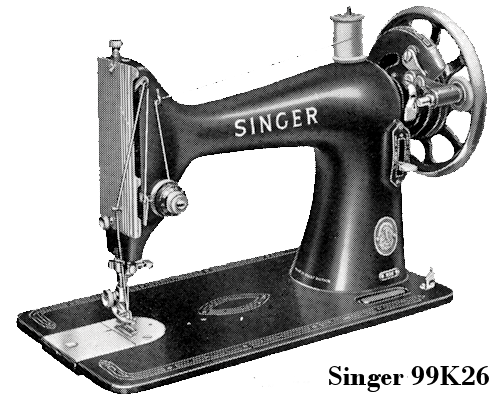
99K31

|
These are the known 99 class
Early models (forward stitch only):
99K1 1911- 3/4 size version of the 66K1 but with standard side clamping
low shank presser feet.
99K2 1921- Small tension discs; handcrank (originally)
99K5 1924-25
99K10 1922-24 Aluminium; portable (very rare)
99K13 1924-1958 Belt drive electric motor, typically with knee control
99K21 1924-54 Treadle
99K22 1924-54 Hand crank
A manual suitable for the above machines can be found here: 99K
Class Manual
Later models with lever style stitch length adjustment and back-tack
(reverse)
99K26 1950s Treadle with reverse
99K27 1950s Hand crank with reverse
99K28 1950s Belt drive electric motor with reverse.
99K29 1958- Treadle with reverse serial under bed after 1961
99K30 1958- Hand crank with reverse serial under bed after 1961
99K31 1958- Belt drive electric motor with reverse serial under bed after
1961
|
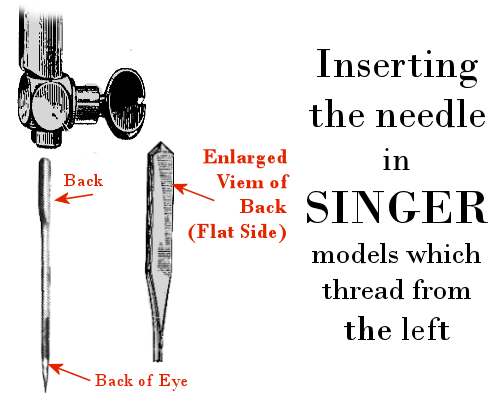
All 66 and 99 class machines use regular 15×1 domestic needles
positioned with the flat (back) of the needle facing the pillar. The
needle is threaded from left to right.
|
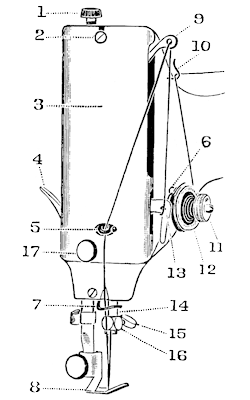
|
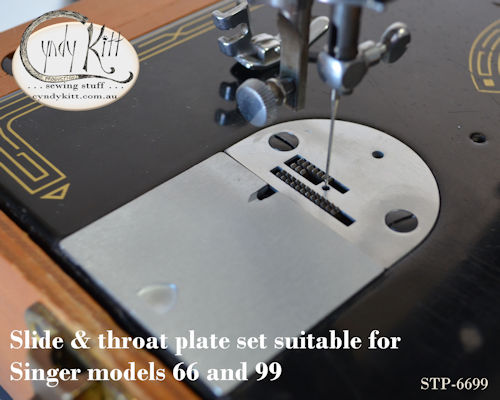
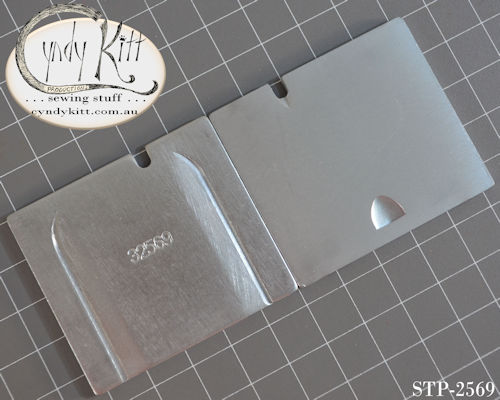
|
Unfortunately if you want shiny chrome you'll have to sort that out for
yourself, but this new Chinese made slide plate is perfectly acceptable
if you have lost the original and you want to get a vintage Model 66 or
99 Singer sewing again. I also have throat plates (needle plate) at the
same price so check out the slide plate section of my shop.
Please note the original #32569 slide plate is 2mm thick, but the new
replacement plates 2.5mm thick, so the plate sits just a little proud
of the bed.
The #32602 (2015) throat plate is the correct 2mm thick
|
|
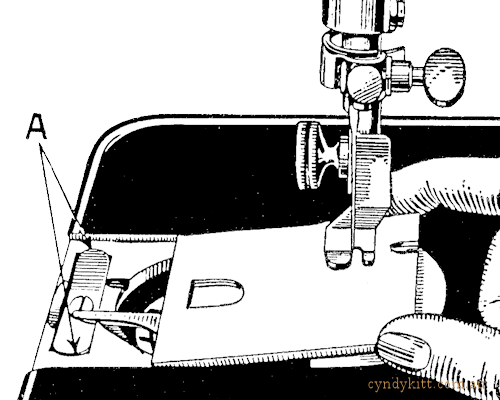
|
The plate has grooves on the back that fit to a machine
mounted flat spring. Counterintuitively, a removed slide plate is replaced
from the right (as pictuered).
Please take care to ensure the ends of the flat spring (A) slide into
the grooves on the underside of the plate.
|
 |
Superior quality Taiwanese made chrome metal "172222"
bobbins
I have personally tested these bobbins in many 66 and 99class machines
over the last decade
|
 |
Check Spring for Singer model 66/99.
Singer part # 32575
Instructions to replace on 66 and early
model 99 class
Instructions to replace on later model
99 class (from 99K26 on)
|
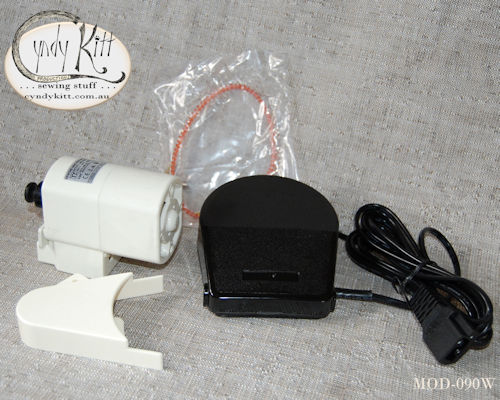 |
New bolt on motor kit complete with
foot control
|
 |
|
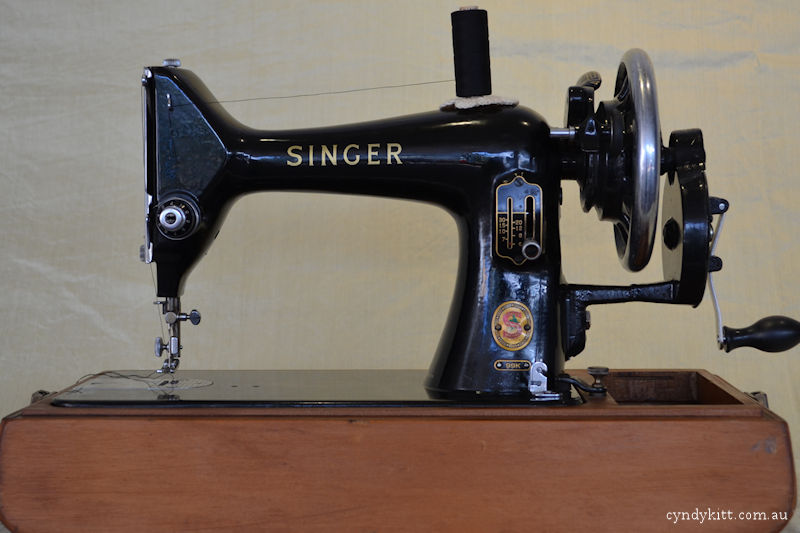 |






